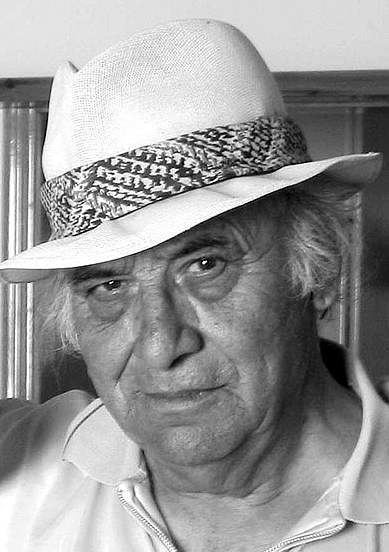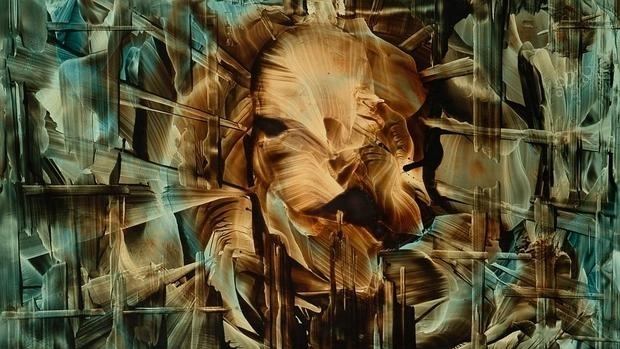Name Juan Guirado | Children Catalina Guirado | |
 | ||
Died 2010, Huercal-Overa, Spain | ||
Juan antonio guirado video homenaje moj car 2013
Juan Antonio Guirado (Jaen, Spain, 1932-2010) was a Spanish artist.
Contents
- Juan antonio guirado video homenaje moj car 2013
- Spanish artist
- Career
- In Australia
- Exhibitions
- Return to Spain
- Themes
- Museums and Institutions
- References

Spanish artist

In 1946, after a brief spell as a bullfighter, Guirado began work as an apprentice to mural painter Joaquin Segarra in Madrid, before traveling first to Rome to study the Renaissance artists, and then to Paris where he studied at the Impressionist School.
Career
In 1955 he traveled to New York where he was commissioned to paint a series of important murals.
His big break happened in 1956 when he was approached on the street in Madrid for directions to a good restaurant. Instead of just giving directions, Juan lead them to the premier restaurant in the city and was invited to join them, resulting in him being hired as their driver for a business trip.
During the trip a friendship blossomed, and on return to Madrid the couple, after seeing Guirado’s work, were happy to pay 80 times what the painter had been receiving for his work at the time. Due to this relationship, in 1956 Guirado was invited to exhibit at the prestigious Soler Gallery at the Fontainbleau Hotel in Miami.
In Australia
In 1959 he moved to Australia to ‘find himself as a painter’, first living in Boneigilla before working in the Port Kembla Steelworks, and then cutting cane in Queensland. He eventually settled in Sydney, renting a studio in Paddington, painting all day then working at night cleaning factories and offices to earn money to buy materials for his art.
He felt a strong spiritual connection to the country, saying in one interview he felt more soul and spirituality there than in his homeland of Spain. His work in Spain had been traditional in the form of portraits and landscapes, but it was in Australia he evolved his distinct and personal style.
In 1967–1969 he held one man shows at prestigious galleries in Australia including the El Dorado Gallery, the Red Rose Gallery, the St Ives Gallery, and the Round House University of New South Wales. He was also commissioned to paint reproductions of the Spanish masters as well as his own work for The Spanish Club on Liverpool Street in Sydney, where they still hang to this day. Whilst on a trip to London in 1969 he sold a painting to British film director John Schlesinger, who had just won an Oscar that year for his film Midnight cowboy.
Exhibitions
In 1970, Guirado’s Madrid exhibition, originally scheduled for three weeks showing at the Cultart Galleries, was extended to six weeks by public demand. The exhibition was Guirado’s showcase to Spain, revealing his new style inspired by living in Australia. It received wide coverage in the magazines and on television, with a documentary film about Guirado and his work made for cinema release. Several of his pieces have sold for $20,000 and higher.
It was during his time in Australia that he met his muse and love of his life, Audrey Ballard. She began modeling for him to earn extra money, and ended up living with him and having their daughter Catalina Guirado.
Return to Spain
The family returned to Spain separately, Guirado returning first, followed a year or two later by Audrey and Catalina. After a brief period in Madrid they settled in Los Villares, a small village just outside Guirado’s place of birth, Jaen in Andalusia.
In 1976 art agent Dame Francoise Tempra organized 10 major shows for him as well as having his work curated in permanent collections at the Kemptovic in Le Touquet, France; University of Buffalo, New York; Museum of Art and History, Geneva; Via Condomer, Venice; the British Museum, London; The Roundhouse Museum, Australia; The Spanish center, Australia; Musee d’art et d’histoire, Geneva; the Angers Museum, France; Trevizo civic museum, and the private collection of the late King Rey of Jordon. He won 1st prize at the prestigious International exposition, Venice, Italy in the same year.
Themes
Guirado’s work includes a diversity of themes which are evocative. Some critics have referred to his work as '‘essentialist’' and all have agreed it is a very distinguishable and unique style that will not be mistaken for anyone else. His traditional Catholic upbringings have paid little part in the themes of his paintings with Guirado instead drawing inspiration from Eastern philosophy.
Carlos Arean, director of the Museum of Contemporary Art in Madrid, described Juan as having his eye on the future, with acclaimed pieces, Apocolypse, and, Working Man’s Christ, amongst his favorite.
During the 80′s Guirado returned to Spain permanently and continued to paint and exhibit worldwide before settling in Mojacar, Almeria in 1995, where he was considered a revered artist and member of the community with a gallery built in his honor.
In 1995 artist and acclaimed Spanish art critique and historian, Manuel Quintanilla, wrote a book on Guirado’s life, philosophy and work, El Pintor Contemporaneo Andaluz, accompanied by an art exhibition of his work.
During the 90s and 2000s Guirado turned his back on the international art scene choosing to paint for himself and sell paintings to local townsfolk and tourists. He also acted as curator of a gallery built for his sole use in the small town of Garrucha near Mojacar. He became involved in the local political party, Mojacar 2000, and could be found playing flamenco guitar and singing with the local Spanish Gypsy community.
Juan Antonio Guirado died of lung cancer in July 2010, one month short of his 78th birthday. Catalina Guirado is his only heir. The town council of Mojacar is creating a tribute to him with a museum honoring the man and his work.
Exhibitions
1956: Soler Gallery, Hotel Fontain, de Miami, Florida 1961: St. Ives Gallery, Sydney, Australia 1962: Red Rose Gallery, Sydney 1963: Studio 4 Gallery, Sydney 1965: Campbell Gallery, Sydney 1966: El Dorado Gallery, Sydney 1967: El Dorado Gallery, Sydney 1968: Douglas Gallery, Auckland, New Zealand. 1969: Round House University, N.S.W, Sydney * Danny Gallery, London 1970: Galería Fedelta, Roma * Sala Cultart, Madrid * The Craftasman´s Gallery, Sydney 1971: The Craftasman´s Gallery, Sydney 1972: Sebert Art Gallery, Sydney 1973: Clarissa Richards Gallery, Sydney 1974: Woollahara Gallery, Sydney 1975: Sixty One Gallery, London 1976: Logis de Lancreau, Angers, France * Centre d´art FranÇais, París * Palais de L´europe, Le touquet, France * State University, Búfalo, U.S.A.* Exposición Internacional Grolla D´oro, Venice (1º Premio:Medallade Oro) * Chicago International TradeExposition. In Celebration of America Bicentennial; New York * Musee National Valleta, Malta * Calais Museo;, France * Sixty One Gallery, London 1978: Milán, Italy * Hotel Ramada, Geneva, Switzerland * Canning House, London 1979: Glasgow, Escocia * Canning House, London * Spanish House, London 1981: Canning House, London 1986: Hansaç Agolani, Oasis de Nazaret, Lanzarote 1988: “La Galeria”, Teguise, Lanzarote 1989: CajaSur, 125 Aniversario, Jaén Spain 2008: Balearic Islands expose
Museums and Institutions
Museo de Arte Contemporáneo, Madrid, Spain National fine Arts Museum, Malta Civic Museum, Treviso, Italy Angers Museum, France Round House University, N.S.W. Australia Spanish Center, Sidney, Australia State of New York University Búfalo, USA Quentovic Museum, Le Touquet, France Grolla d Óro Mogliano Veneto, Villa Condulmer, Venice, Italy Musee d´Art et d´Histoire, Geneva, Switzerland Residencia Rey Hussein, London, England Museo Treviso, Venice, Italy
